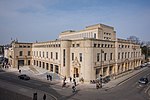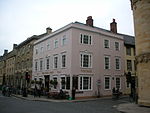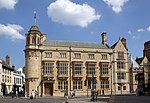Junior Research Fellowships
Academia in the United KingdomAcademic ranksBritish academicsFellows of learned societies of the United KingdomFellowships ... and 2 more
Research and development in the United KingdomUniversities in the United Kingdom

A Junior Research Fellowship (JRF), sometimes known as a Research Fellowship or Fellow by Examination, is a postdoctoral fellowship for early-career scholars and recent PhD/DPhil graduates at the University of Oxford and the University of Cambridge. JRFs are among the most highly competitive, prestigious postdoctoral fellowships in the United Kingdom. The fellowships are also seen as direct pathways to tenure-track positions.
Excerpt from the Wikipedia article Junior Research Fellowships (License: CC BY-SA 3.0, Authors, Images).Junior Research Fellowships
Broad Street, Oxford City Centre
Geographical coordinates (GPS) Address Nearby Places Show on map
Geographical coordinates (GPS)
| Latitude | Longitude |
|---|---|
| N 51.755 ° | E -1.255 ° |
Address
Weston Library
Broad Street
OX1 3BQ Oxford, City Centre
England, United Kingdom
Open on Google Maps







